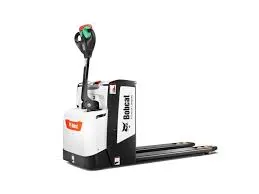


Understanding the Pallet Truck A Key Tool for Material Handling
In the realm of material handling and logistics, efficiency and ease of transport are paramount. One of the most important tools that help achieve these objectives is the pallet truck, specifically the 2.5-ton capacity model. This piece of equipment has become an indispensable part of warehouses, factories, and distribution centers worldwide, streamlining loading, unloading, and movement of goods.
What is a Pallet Truck?
A pallet truck, also known as a pallet jack, is a manual or powered device designed to lift and move pallets—a flat transport structure that supports goods. The 2.5-ton pallet truck refers specifically to models that can handle loads up to 2,500 kilograms (approximately 5,500 pounds). Its fundamental design includes a pair of forks that slide under the pallet, a pump handle for lifting, and wheels for maneuverability, making it a practical solution for transporting heavy and bulky items over short distances.
Advantages of Using a Pallet Truck
1. Enhanced Efficiency The use of a 2.5-ton pallet truck can significantly improve workflow within a facility. Manual labor can be taxing and time-consuming, but with the assistance of a pallet truck, workers can move heavier loads faster and with less effort. This not only increases productivity but also minimizes the risk of injury.
2. Versatility Pallet trucks are adaptable tools that can be used in various environments. Whether in grocery stores, manufacturing plants, or warehouses, they can transport a wide range of products from pallets stacked with merchandise to heavy machinery components. Their ability to accommodate different pallet sizes and weights makes them a versatile asset in any logistics operation.

3. Cost-Effective Investing in a 2.5-ton pallet truck is relatively inexpensive compared to other material handling solutions such as forklifts. Moreover, they require less maintenance and have a longer service life, contributing to lower operational costs over time. For small to medium-sized businesses, this affordability makes investment in pallet trucks a smart decision.
4. Ergonomic Design Safety is a crucial element in any workplace, and pallet trucks help enhance workplace ergonomics. By reducing the physical strain on workers, these trucks limit the potential for injury associated with lifting heavy items. This focus on safety and comfort ultimately contributes to higher employee morale and efficiency.
Types of Pallet Trucks
There are primarily two types of pallet trucks available manual and electric. Manual pallet trucks rely on human power to lift and maneuver loads, making them a perfect choice for smaller operations or applications where only occasional movement of pallets is required. Electric pallet trucks, on the other hand, are powered and can handle larger loads with greater speed and ease, making them ideal for environments where heavy usage is anticipated.
Conclusion
In conclusion, the 2.5-ton pallet truck represents a simple yet highly effective tool for material handling across various industries. Its combination of efficiency, versatility, cost-effectiveness, and ergonomic benefits makes it an ideal choice for businesses looking to optimize their operations. While technology continues to advance in the field of logistics, the essential role of the pallet truck remains undeniable, making it a staple in warehouses and production facilities around the world. Investing in the right pallet truck is not just a matter of improving productivity; it's about enhancing safety and creating a more efficient work environment.



